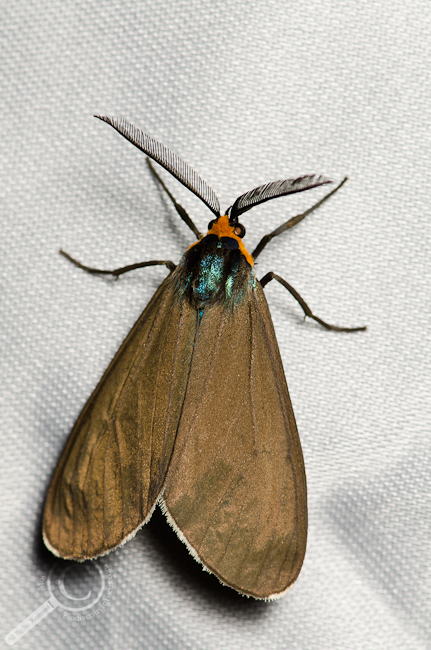I may be nearly useless with moth identification, but this is one I know by heart. Of course, this isn’t really brag worthy since there aren’t many moths with an iridescent blue thorax and yellow head, but I’m working on baby steps here.
Just because I can identify it doesn’t mean I can place it in the correct family however! When I was an undergrad (back in the day when I had to walk 10 miles uphill both ways, etc) I was taught the tiger moths were a family unto themselves. Since then however, they’ve been sunk into the family Erebidae, causing me much confusion.
The Virginia Ctenucha feeds on a variety of grasses and sedges as a caterpillar, and adults are active from late spring to mid summer.
What feeds on Virginia Ctenucha though? Compsilura concinnata, a tachinid fly that was introduced to North America to combat Gypsy moth (Lymantria dispar) in the late 19th and early 20th century. As is wont to happen with poorly understood ecology and introductions, Compsilura concinnata turned out to be a broad generalist, and is right at home within a wide diversity of caterpillar hosts. There’s concern that this “new” parasitoid is a contributing factor to declining saturniid moth populations in eastern North America, but the fly appears to be under heavy pressure from a hyper-parasitoid species of trigonalid wasp, which appears to be keeping fly populations low enough to prevent eradication of native moths.
———
Kellogg, S.K., Fink, L.S. & Brower, L.P. (2003). Parasitism of Native Luna Moths, (L.) (Lepidoptera: Saturniidae) by the Introduced (Meigen) (Diptera: Tachinidae) in Central Virginia, and Their Hyperparasitism by Trigonalid Wasps (Hymenoptera: Trigonalidae), Environmental Entomology, 32 (5) 1027. DOI: 10.1603/0046-225X-32.5.1019

